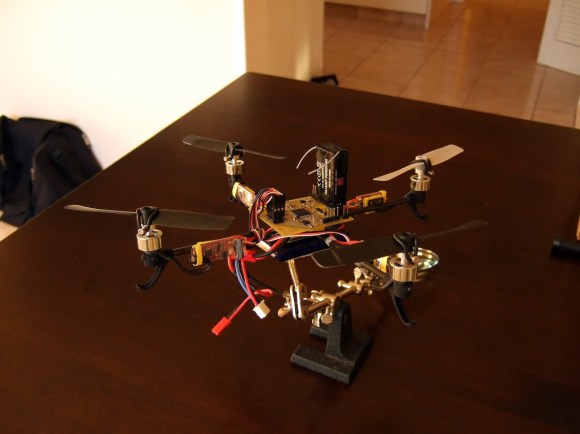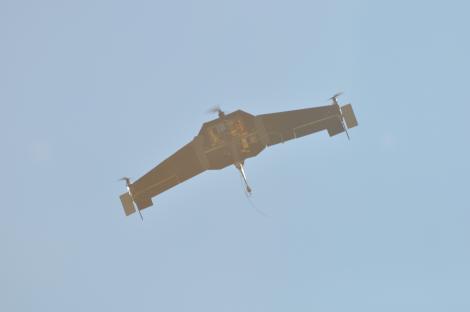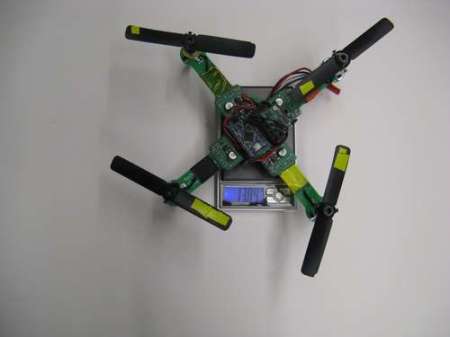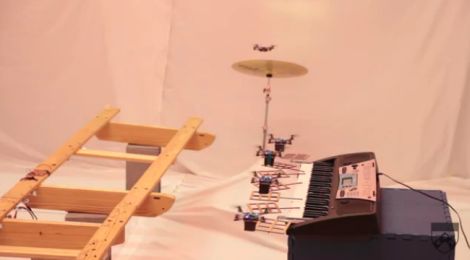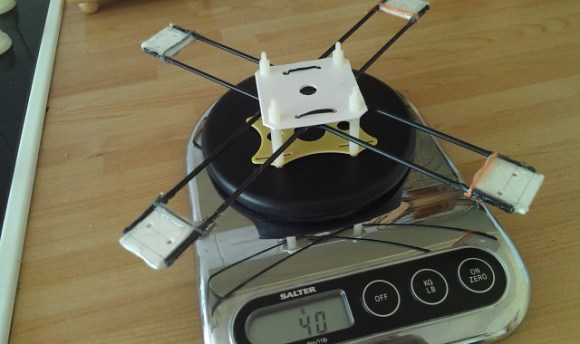
[Oscar] has been busy lately building DIY mini quadcopters. We saw his controller design earlier in the month. Back then he was using it with his walking robot designs. Now [Oscar] has posted up some information on his quadcopter work. Even though [Oscar] is new to mini quads, he began by designing his own frame. He started his frame design by using a cut down version of the well-known 949 frame. [Oscar] chose polystyrene for his motor mounts, which turned out to be the downfall of the frame. Polystyrene proved to be much too flimsy to handle the vibrations of the motors and props. The vibrations were transmitted to the accelerometers, which resulted in a model that was very hard to control. You can see this in the first video after the break.
For his second attempt, [Oscar] started with a proven design from HobbyKing. HobbyKing’s fiberglass mini quadcopter frame is sturdy, but heavy, and expensive to replace (If the parts are even in stock). The frame did work though, so he used it as a starting point for his second DIY frame. The new frame is based upon fiberglass shafts. [Oscar] used hot glue to join the shafts to the motor mounts. Each joint was wrapped in string, which was then coated with hot glue. We’d suggest thin cyanoacrylate glue in the future for these types of joints. Only a few drops of CA soaks up into the string, creating an extremely light and strong joint. [Oscar’s] frame ended up at about half the weight of the HobbyKing frame, but was stiff enough for a successful flight test, as can be seen in the second video after the break.
Continue reading “DIY Mini Quadcopter Frame Is Light And Strong”

